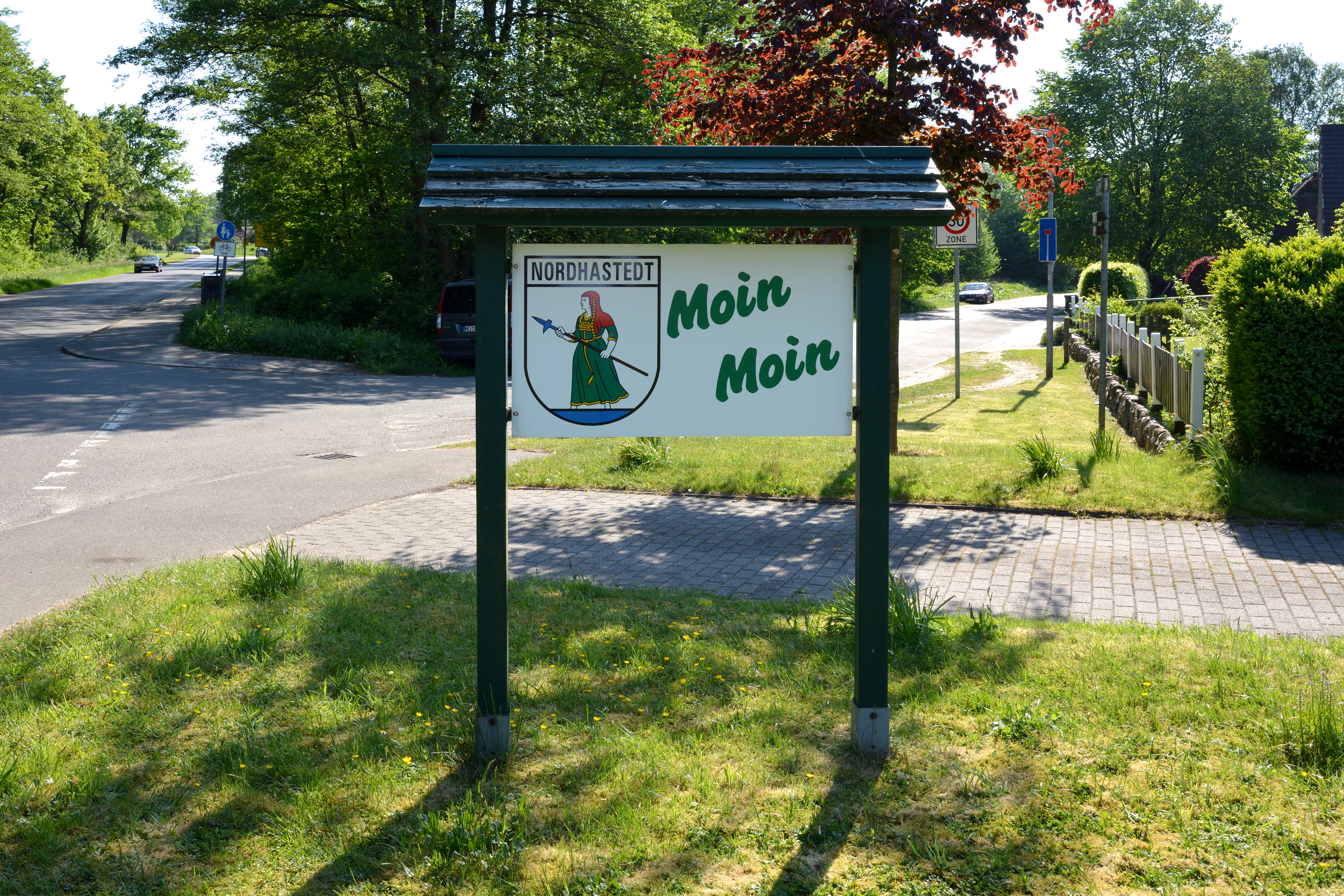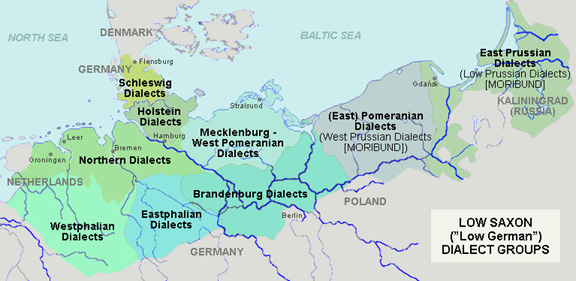|
Moin
''Moin'', ''moi'' or ''mojn'' is a Low German, Frisian, High German ( or ), Danish () and Kashubian () greeting from East Frisia, Northern Germany, the eastern and northern Netherlands, Southern Jutland in Denmark and parts of Kashubia. It means "hello" and, in some places, "goodbye" as well. Usage ''Moin'' is used at all times of day, not just in the morning (see Etymology section below). The reduplicated form ''moin moin'' is often heard,Plattmaster.deMoinmoin - wat heet dat? Retrieved 2011-05-31. although some authors claim it is regarded by locals as tourists' usage. Etymology Many people think that ''moin'' derives from various regional pronunciations of ("good morning"), which tend to alter, vocalise, or skip ''rg''. However, the word may actually also derive from the Dutch, Frisian, and Low German word , meaning "beautiful" or "good". Similar forms in Low Saxon are , , . Possibly, as is common in etymology, one origin is correct (either from or ) but spread thank ... [...More Info...] [...Related Items...] OR: [Wikipedia] [Google] [Baidu] |
MoinMoin
MoinMoin is a wiki engine implemented in Python, initially based on the PikiPiki wiki engine. Its name is a play on the North German greeting ''Moin'', repeated as in WikiWiki. The MoinMoin code is licensed under the GNU General Public License v2, or (at the user's option) any later version (except some 3rd party modules that are licensed under other Free Software licenses compatible with the GPL). Dozens of organizations use MoinMoin to run public wikis, including free software projects Ubuntu, Apache, Debian, and FreeBSD. MoinMoin faces a supportability gap in 2020, based on the January 2020 deprecation of Python 2.7. The current release of Moinmoin, 1.9.11, is written in Python 2.7 and is not slated to be ported to Python 3. Moinmoin 2.0, based on Python 3.5, is not yet released (as of Aug. 2019), and "development is very slow going," according to their Python3 support page. Installation of Moinmoin 1.9.11 now yields multiple warnings of this deprecation. Technical detail ... [...More Info...] [...Related Items...] OR: [Wikipedia] [Google] [Baidu] |
Flensburg
Flensburg (; Danish, Low Saxon: ''Flensborg''; North Frisian: ''Flansborj''; South Jutlandic: ''Flensborre'') is an independent town (''kreisfreie Stadt'') in the north of the German state of Schleswig-Holstein. Flensburg is the centre of the region of Southern Schleswig. After Kiel and Lübeck, it is the third largest town in Schleswig-Holstein. The nearest larger towns are Kiel ( south) and Odense in Denmark ( northeast). Flensburg's city centre lies about from the Danish border. Known for In Germany, Flensburg is known for: * the Kraftfahrt-Bundesamt (roughly: National Driver and Vehicle Register) with its ''Verkehrssünderkartei'' (literally: "traffic sinner card file"), where details of traffic offences are stored * its beer '' Flensburger Pilsener'', also called "''Flens''" * the centre of the Danish national minority in Germany * the greeting Moin Moin * the large erotic mail-order companies ''Beate Uhse'' and ''Orion'' * its handball team SG Flensburg-Handewitt * th ... [...More Info...] [...Related Items...] OR: [Wikipedia] [Google] [Baidu] |
Plattdüütsch
: : : : : (70,000) (30,000) (8,000) , familycolor = Indo-European , fam2 = Germanic , fam3 = West Germanic , fam4 = North Sea Germanic , ancestor = Old Saxon , ancestor2 = Middle Low German , dia1 = West Low German , dia2 = East Low German , iso2 = nds , iso3 = nds , iso3comment = (Dutch varieties and Westphalian have separate codes) , lingua = 52-ACB , map = Nds Spraakrebeet na1945.svg , mapcaption = Present day Low German language area in Europe. , glotto = lowg1239 , glottoname = Low German , notice = IPA Low German or Low Saxon (in the language itself: , and other names; german: Plattdeutsch, ) is a West Germanic language variety spoken mainly in Northern Germany and the northeastern part of the Netherlands. The dialect of Plautdietsch is also spoken in the Russian Mennonite diaspora worldwid ... [...More Info...] [...Related Items...] OR: [Wikipedia] [Google] [Baidu] |
Low German
: : : : : (70,000) (30,000) (8,000) , familycolor = Indo-European , fam2 = Germanic , fam3 = West Germanic , fam4 = North Sea Germanic , ancestor = Old Saxon , ancestor2 = Middle Low German , dia1 = West Low German , dia2 = East Low German , iso2 = nds , iso3 = nds , iso3comment = (Dutch varieties and Westphalian have separate codes) , lingua = 52-ACB , map = Nds Spraakrebeet na1945.svg , mapcaption = Present day Low German language area in Europe. , glotto = lowg1239 , glottoname = Low German , notice = IPA Low German or Low Saxon (in the language itself: , and other names; german: Plattdeutsch, ) is a West Germanic language variety spoken mainly in Northern Germany and the northeastern part of the Netherlands. The dialect of Plautdietsch is also spoken in the Russian Mennonite diaspora worldwi ... [...More Info...] [...Related Items...] OR: [Wikipedia] [Google] [Baidu] |
Luxembourgish
Luxembourgish ( ; also ''Luxemburgish'', ''Luxembourgian'', ''Letzebu(e)rgesch''; Luxembourgish: ) is a West Germanic language that is spoken mainly in Luxembourg. About 400,000 people speak Luxembourgish worldwide. As a standard form of the Moselle Franconian language, Luxembourgish has similarities with other varieties of High German and the wider group of West Germanic languages. The status of Luxembourgish as an official language in Luxembourg and the existence there of a regulatory body have removed Luxembourgish, at least in part, from the domain of Standard German, its traditional . History Luxembourgish was considered a German dialect like many others until about World War II but then it underwent ausbau, that is it created its own standard form in vocabulary, grammar and spelling and therefore is seen today as an independent language, an ausbau language. Due to the fact that Luxembourgish has a maximum of some 285,000 native speakers, resources in the language lik ... [...More Info...] [...Related Items...] OR: [Wikipedia] [Google] [Baidu] |
Tampere
Tampere ( , , ; sv, Tammerfors, ) is a city in the Pirkanmaa region, located in the western part of Finland. Tampere is the most populous inland city in the Nordic countries. It has a population of 244,029; the urban area has a population of 341,696; and the metropolitan area, also known as the Tampere sub-region, has a population of 393,941 in an area of . Tampere is the second-largest urban area and third most-populous individual municipality in Finland, after the cities of Helsinki and Espoo, and the most populous Finnish city outside the Greater Helsinki area. Today, Tampere is one of the major urban, economic, and cultural hubs in the whole inland region. Tampere and its environs belong to the historical province of Satakunta. The area belonged to the Häme Province from 1831 to 1997, and over time it has often been considered to belong to Tavastia as a province. For example, in '' Uusi tietosanakirja'' published in the 1960s, the Tampere sub-region is presented as p ... [...More Info...] [...Related Items...] OR: [Wikipedia] [Google] [Baidu] |
Finland
Finland ( fi, Suomi ; sv, Finland ), officially the Republic of Finland (; ), is a Nordic country in Northern Europe. It shares land borders with Sweden to the northwest, Norway to the north, and Russia to the east, with the Gulf of Bothnia to the west and the Gulf of Finland across Estonia to the south. Finland covers an area of with a population of 5.6 million. Helsinki is the capital and largest city, forming a larger metropolitan area with the neighbouring cities of Espoo, Kauniainen, and Vantaa. The vast majority of the population are ethnic Finns. Finnish, alongside Swedish, are the official languages. Swedish is the native language of 5.2% of the population. Finland's climate varies from humid continental in the south to the boreal in the north. The land cover is primarily a boreal forest biome, with more than 180,000 recorded lakes. Finland was first inhabited around 9000 BC after the Last Glacial Period. The Stone Age introduced several differ ... [...More Info...] [...Related Items...] OR: [Wikipedia] [Google] [Baidu] |
Finnish Language
Finnish ( endonym: or ) is a Uralic language of the Finnic branch, spoken by the majority of the population in Finland and by ethnic Finns outside of Finland. Finnish is one of the two official languages of Finland (the other being Swedish). In Sweden, both Finnish and Meänkieli (which has significant mutual intelligibility with Finnish) are official minority languages. The Kven language, which like Meänkieli is mutually intelligible with Finnish, is spoken in the Norwegian county Troms og Finnmark by a minority group of Finnish descent. Finnish is typologically agglutinative and uses almost exclusively suffixal affixation. Nouns, adjectives, pronouns, numerals and verbs are inflected depending on their role in the sentence. Sentences are normally formed with subject–verb–object word order, although the extensive use of inflection allows them to be ordered differently. Word order variations are often reserved for differences in information structure. Finnish orth ... [...More Info...] [...Related Items...] OR: [Wikipedia] [Google] [Baidu] |
Southwest Finland
Southwest Finland, calqued as Finland Proper ( fi, Varsinais-Suomi ; sv, Egentliga Finland), is a region in the southwest of Finland. It borders the regions of Satakunta, Pirkanmaa, Tavastia Proper (Kanta-Häme), Uusimaa, and Åland. The region's capital and most populous city is Turku, which was known as the former capital city of Finland before Helsinki. The area comprising the Southwest is largely the same as the historical province of Finland Proper, so named because it is the original home of the tribe known as the Finns proper. Origin of the name Finland Proper The name of Finland Proper has a historical function. In historic times, in the area of the present Southern Finland lived three tribes, which were the Finns proper, the Tavastians and the Karelians. The southwestern part of the country, the province where the Finns proper lived, was simply called Finland (Finnish: ''Suomi''). In the 17th century the name began to be used to refer to the whole land and a speci ... [...More Info...] [...Related Items...] OR: [Wikipedia] [Google] [Baidu] |
Morrow
wikt:morrow, Morrow is a word meaning "the next day" in literary English. It also means "morning" in archaic English Morrow may also refer to: Places in the United States and Canada United States *Morrow, Arkansas *Morrow, Georgia *Morrow, Louisiana *Morrow, Ohio *Morrow County, Ohio *Morrow County, Oregon Canada *Morrow Lake, Ontario *Mount Morrow, Northwest Territories *Morrow Island, British Columbia People * Morrow (surname) Schools *Dwight Morrow High School, in Englewood, New Jersey *Elisabeth Morrow School, Englewood, New Jersey, United States Companies *TwoMorrows Publishing *William Morrow and Company, American publishing house, now an imprint of HarperCollins *Morrow Snowboards, manufacturer owned by K2 Sports *Morrow Designs, US manufacturer of 1985 laptop computer Morrow Pivot II and numerous early-1980s CP/M microcomputers * Morrow Property Brokers, Office 1303, Alameri Tower, Tecom, Dubai, United Arab Emirates Other uses *Morrow (song), a recording by Japanese g ... [...More Info...] [...Related Items...] OR: [Wikipedia] [Google] [Baidu] |
Groningen
Groningen (; gos, Grunn or ) is the capital city and main municipality of Groningen province in the Netherlands. The ''capital of the north'', Groningen is the largest place as well as the economic and cultural centre of the northern part of the country; as of December 2021, it had 235,287 inhabitants, making it the sixth largest city/municipality of the Netherlands and the second largest outside the Randstad. Groningen was established more than 950 years ago and gained city rights in 1245. Due to its relatively isolated location from the then successive Dutch centres of power (Utrecht, The Hague, Brussels), Groningen was historically reliant on itself and nearby regions. As a Hanseatic city, it was part of the North German trade network, but later it mainly became a regional market centre. At the height of its power in the 15th century, Groningen could be considered an independent city-state and it remained autonomous until the French era. Today Groningen is a university ci ... [...More Info...] [...Related Items...] OR: [Wikipedia] [Google] [Baidu] |







